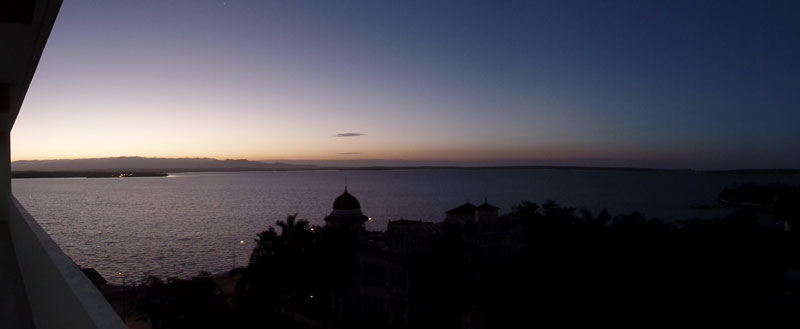
Trip to Cuba and New Orleans
Mike and Judy Henderson
January 25 to February 8, 2016
Before I continue recounting our trip, I need to take a short detour and discuss the currency of Cuba. Cuba has two currencies: the old Peso and the convertible Peso, known as the CUC. The CUC is essentially tied to the US dollar, so one US dollar = one CUC. But Cuba levies a 13% conversion charge when converting US dollars to CUC so you only get .87 CUC for your dollar. The conversion charge for other currencies, such as the Euro or the Canadian dollar, is less. We took Euros to Cuba and were given one CUC for each Euro, which is a conversion rate of 5 to 6%. [Update: When we got to the Hotel Nacional, I found that they converted Euros to CUC at a rate of 1.05 CUC for each Euro. So if you go to Cuba, try to get Euros at a decent rate. Your money will go further.]
Neither the CUC or the old Peso has any value outside of Cuba. Cuban currency is not traded in the international monetary markets. If you take any home it will only have value as a souvenir.
Cubans can own CUC, and convert old Pesos to CUC. The rate is 25 old Pesos to one CUC. If they want to convert CUC to old Pesos, they get 24 old Pesos to one CUC.
Cuba has announced that they will convert to a single currency, and allow that currency to be traded in the world currency market, but a date has not been announced and some Cubans doubt if it will ever happen.
[Update: Between 2020 and 2021, Cuba did away with the CUC. There's only the peso now. The exchange rate is about 24 pesos to $1. The Cuban peso is not traded outside Cuba.]
++++++++++++++++++++++++++++++++++++++++++++
1/26/2016 Today we begin our exploration of Cuba. There was a beautiful sunrise over the bay. It's always hard to capture something like this, but it was a beautiful, striking sunrise.

I went walking around the hotel about 7 am. One thing that struck me was the lack of cars on the highway in front of the hotel. This is the main road through the area, although the hotel is at the end of the Punta Gorda (punta gorda means "fat point", or a point of land sticking out into a bay).
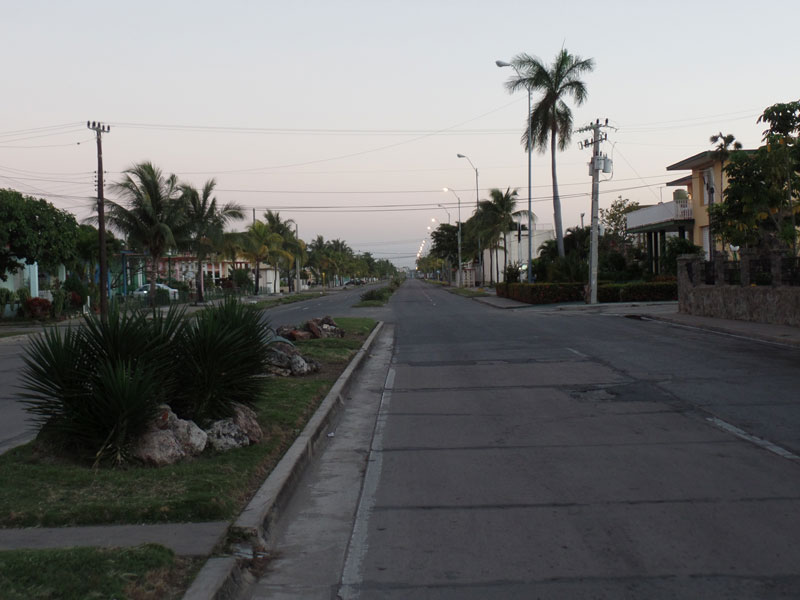
This is one of the taxis that work the area around the hotel. There are auto taxis but these pedal taxis serve the local area for short trips.
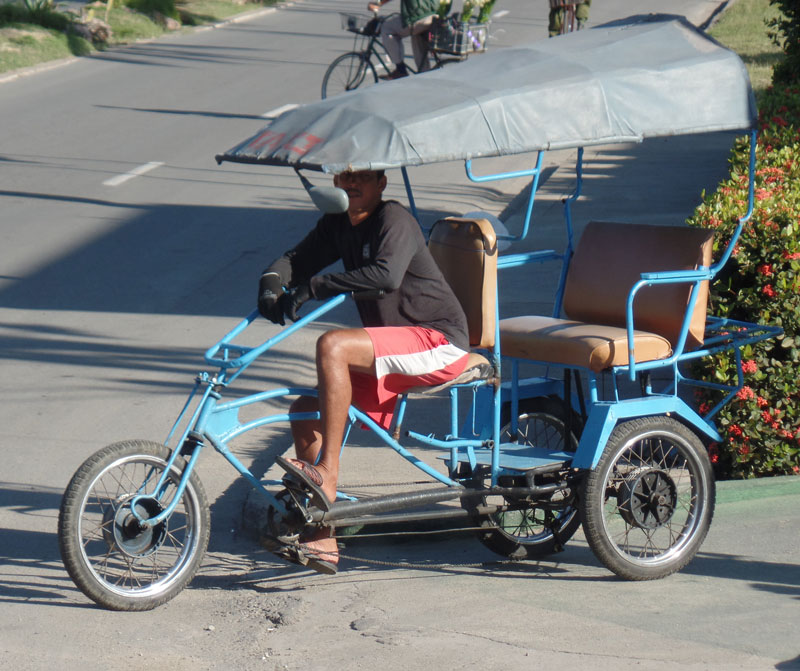
We had breakfast at the hotel. It was crowded with other tourists and several groups were checking out that morning. The breakfast area was a madhouse - but the breakfast was good and offered an extensive spread. These pictures were taken the next morning. You can see the quantity of food. I wonder what the Cuban workers think of the amount and quality of the food offered to the tourist. And sometimes the tourists complain about it!
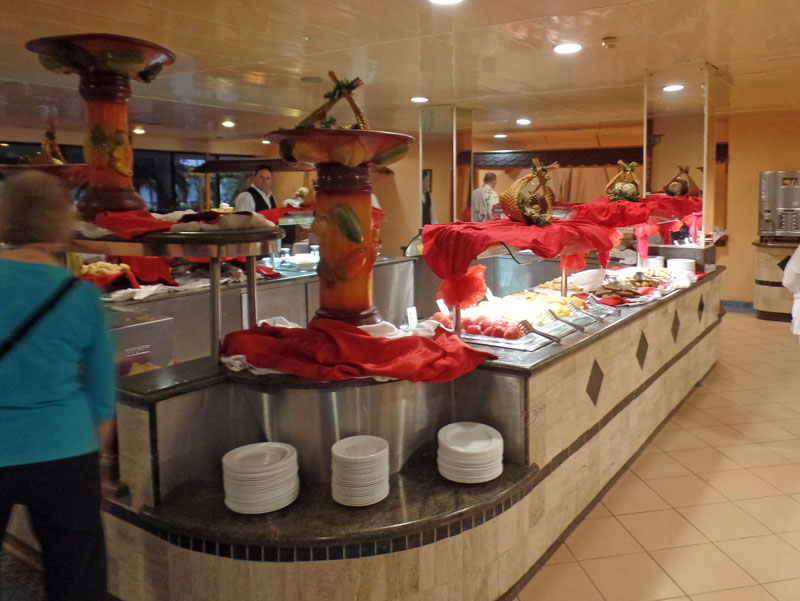
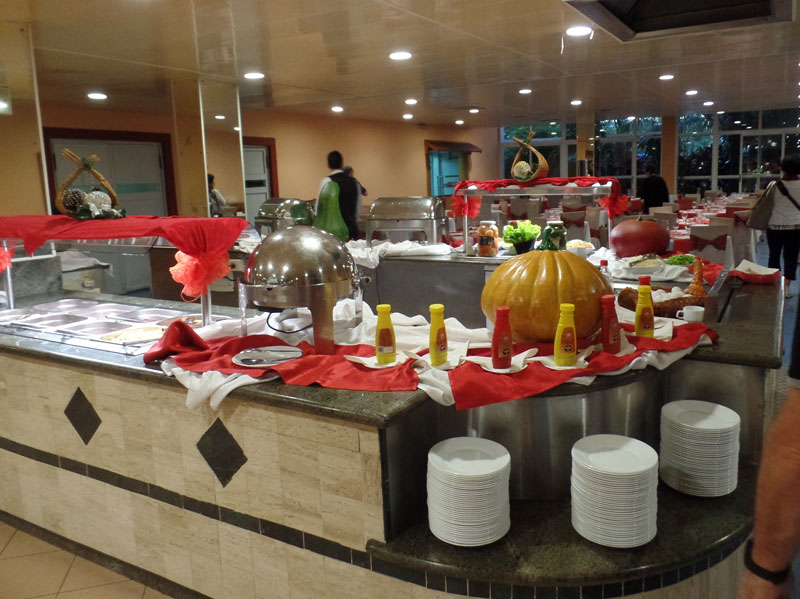
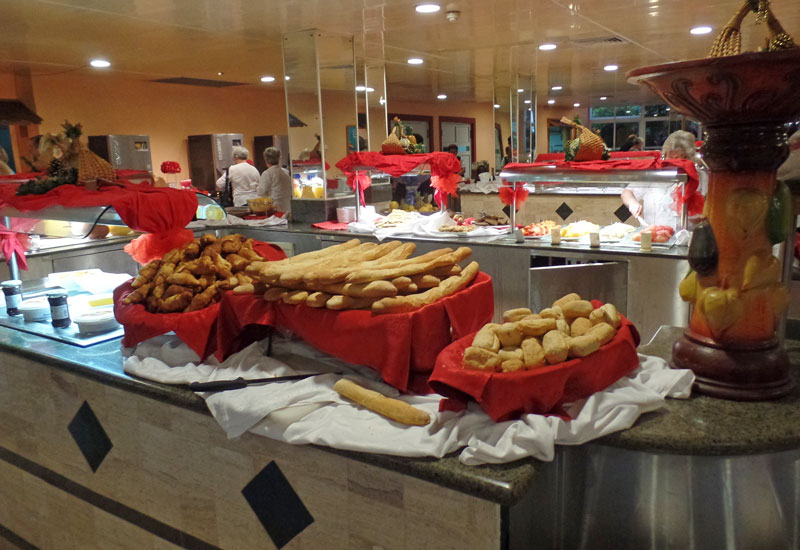
This station offered omelets made to order, and various sliced meats.
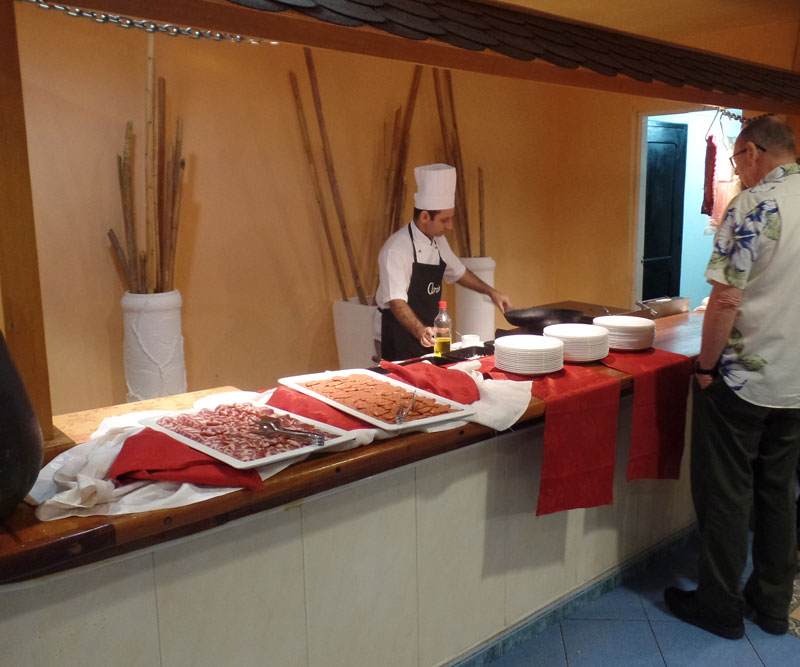
This was the "cheese" station, plus a small amount of sliced meat.
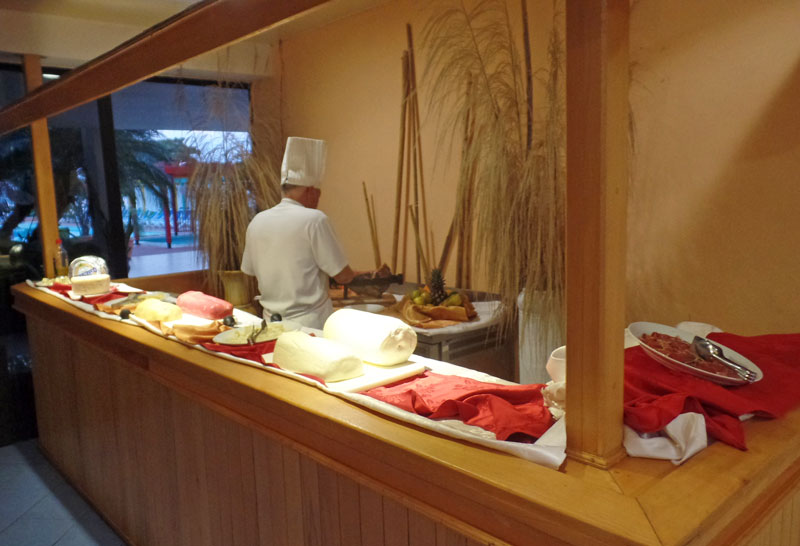
The coffee station.
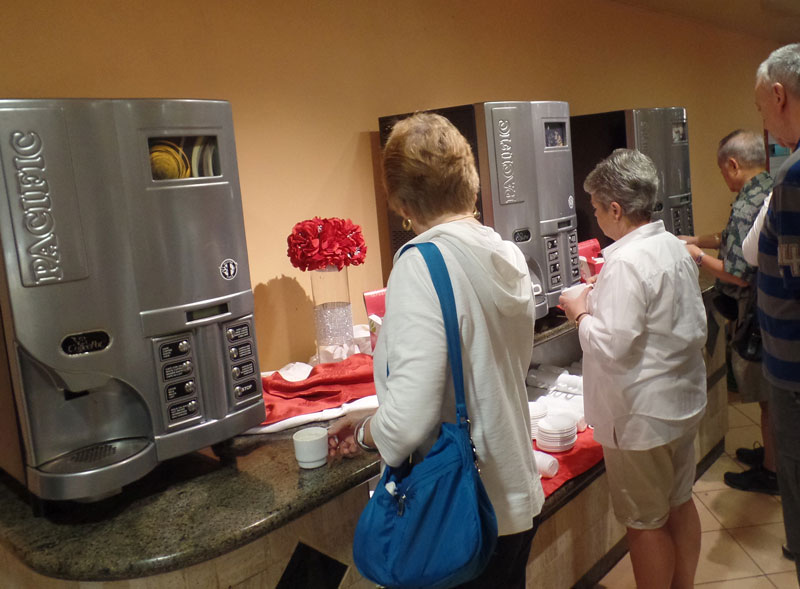
After seeing the poverty in the country, I was somewhat ashamed to be participating in such a breakfast.
We took the bus into town and walked to the central square. This is in the center of the square and shows the town of Cienfuegos and the surrounding area. The town is the dark brown area on the map. Note the bay and the relatively narrow channel into the bay. Our hotel is on the little arm that protrudes down into the bay.
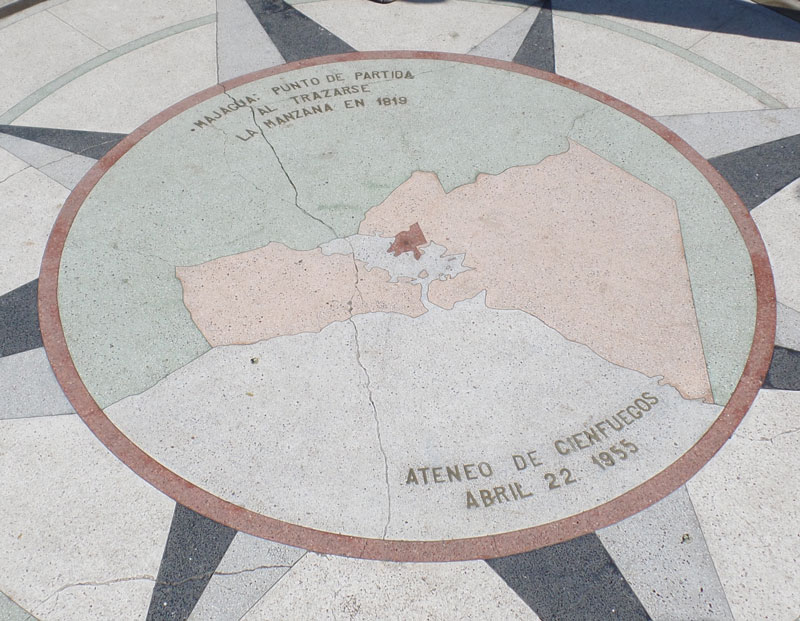
The Opera House is on the square, and dates from the late 1800's.
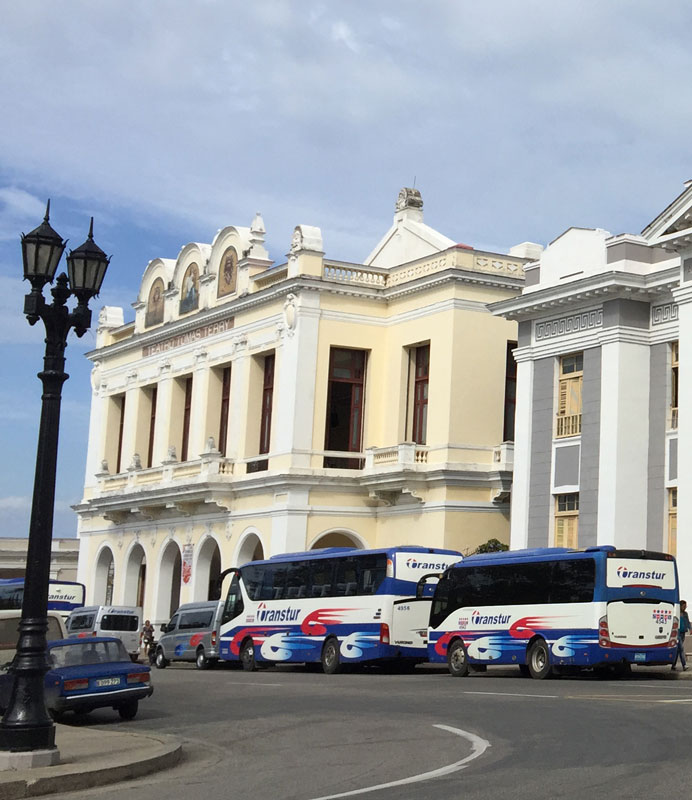
Here we found a choral group from Milwaukee. Although they were visiting, the sang a couple of songs for everyone.

We then went to the church on the plaza.
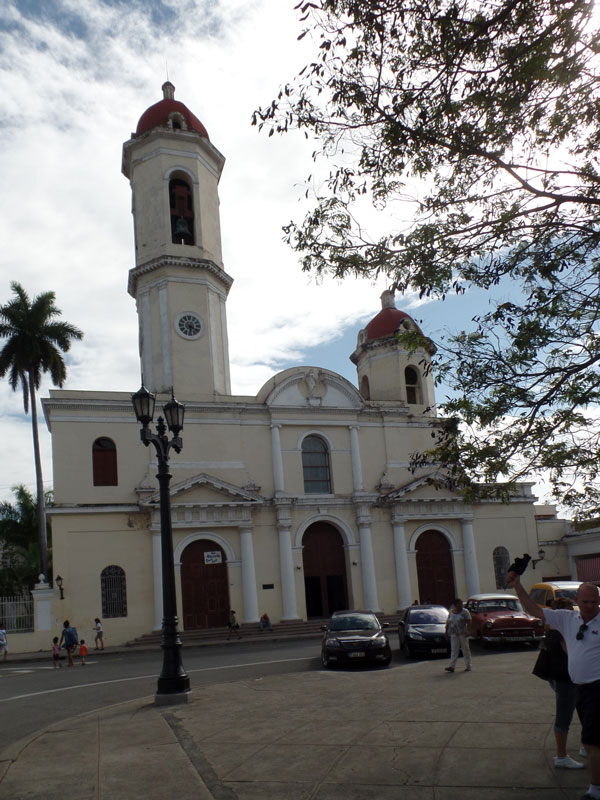
It was undergoing a fairly major renovation.
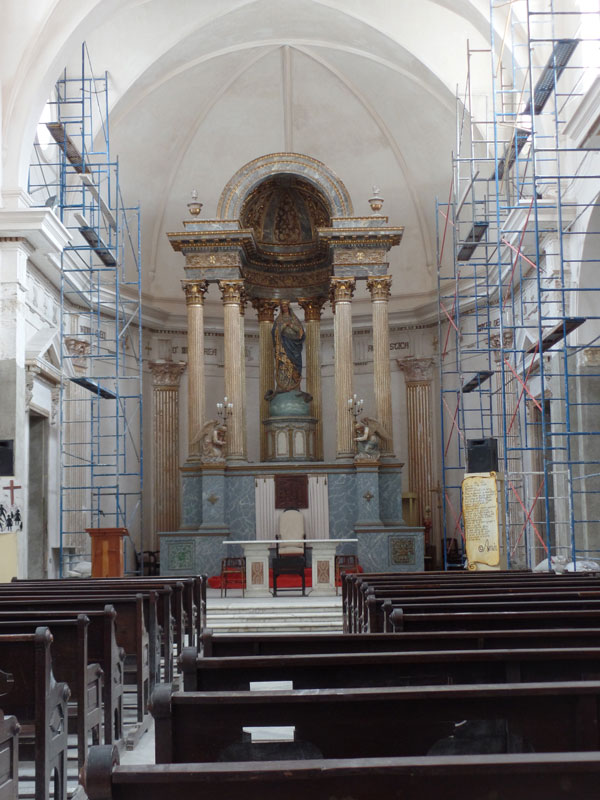
Next we went to an open air "farmer's market." According to our guide, the farmers are forced to sell the majority of their crops to the government at very low prices. The remaining portion of the crops can be sold in these "farmer's markets". However, the prices tend to be high and few Cubans to afford to purchase much.
As a side note, a professional, such as a doctor, an engineer or professor makes the equivalent of about $20 per month. Of course, certain things are provided free, or essentially free, such as a place to live, health care, education and a small ration of food (perhaps a portion of the food taken from the farmers at low prices by the government). The guide commented that the food ration is only enough for a few days, and the ration is provided only once per month. Prices in the farmer's market are in old Pesos, not CUC.
This is the entrance to the Mercado Municipal.
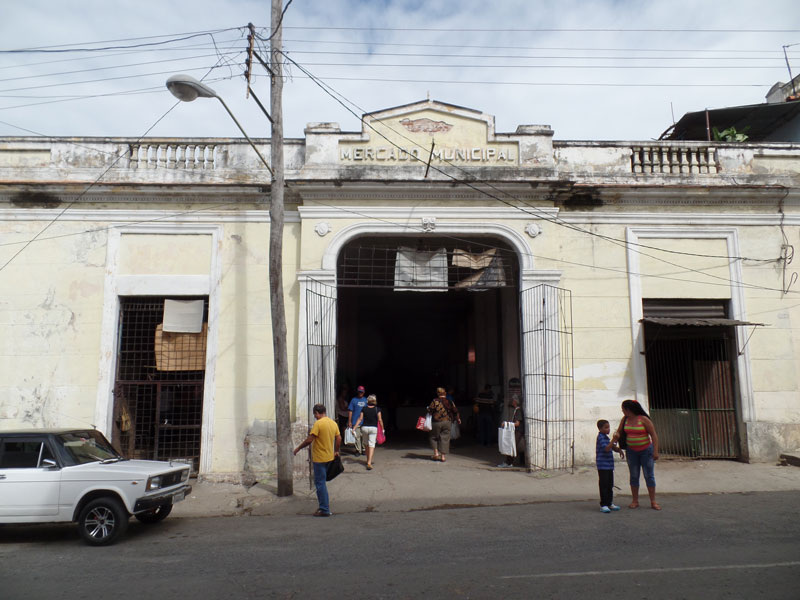
Judy inside the farmer's market.
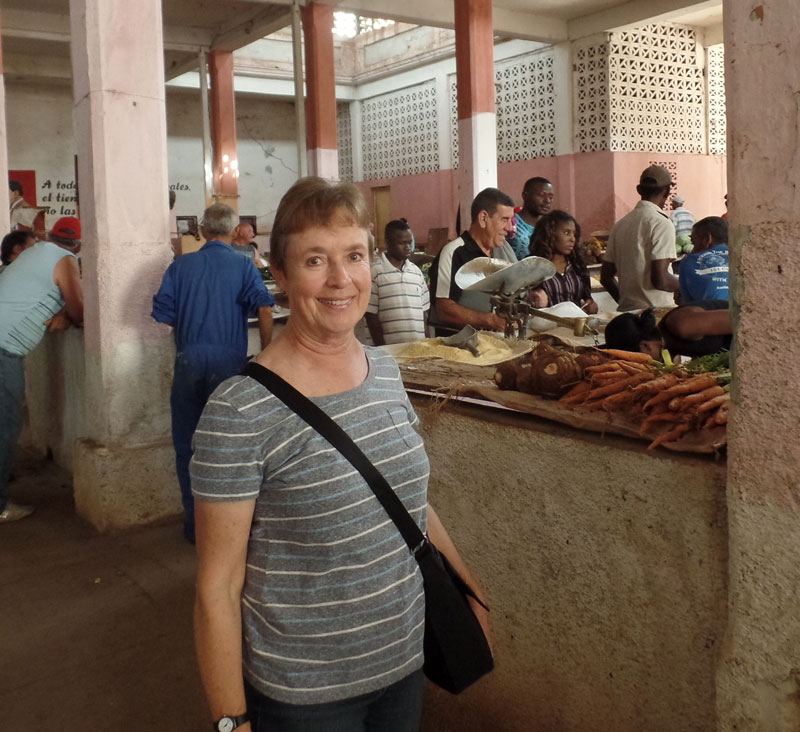
Its not pictured, but there's a meat stall (pig) where the meat is out in the open.
Another interesting thing is the number of horse drawn vehicles. Here's a privately owned "bus" where Cubans can pay a few old Pesos for a ride.
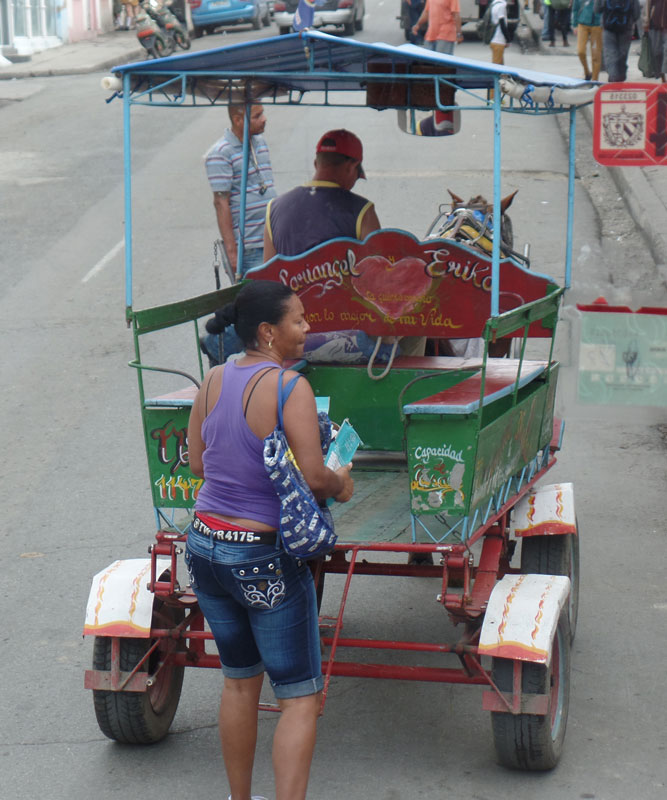
Next was lunch at a very nice privately owned restaurant. We were told that Cuba is beginning to allow some private businesses, especially restaurants and B&B's but they are heavily taxed. It seems to me that the private businesses seem to be primarily in the tourist industry and not businesses that would serve the local population.
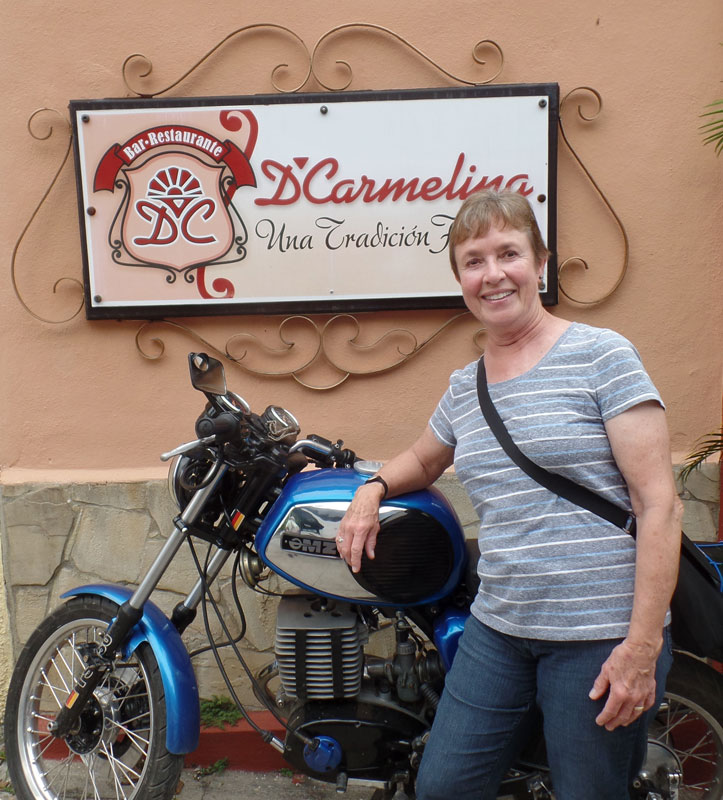
The food was served "family style" at a long table. It was an excellent meal. Many small dishes, but each with a very enjoyable taste. The black bean soup with rice was a favorite for many of us.
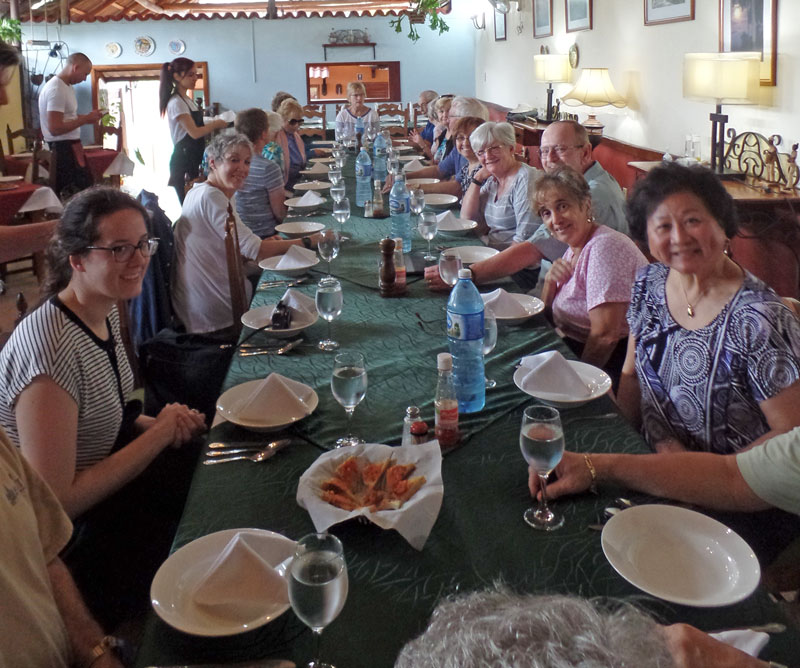
The owners: mother and father, who are the cooks, and their son.
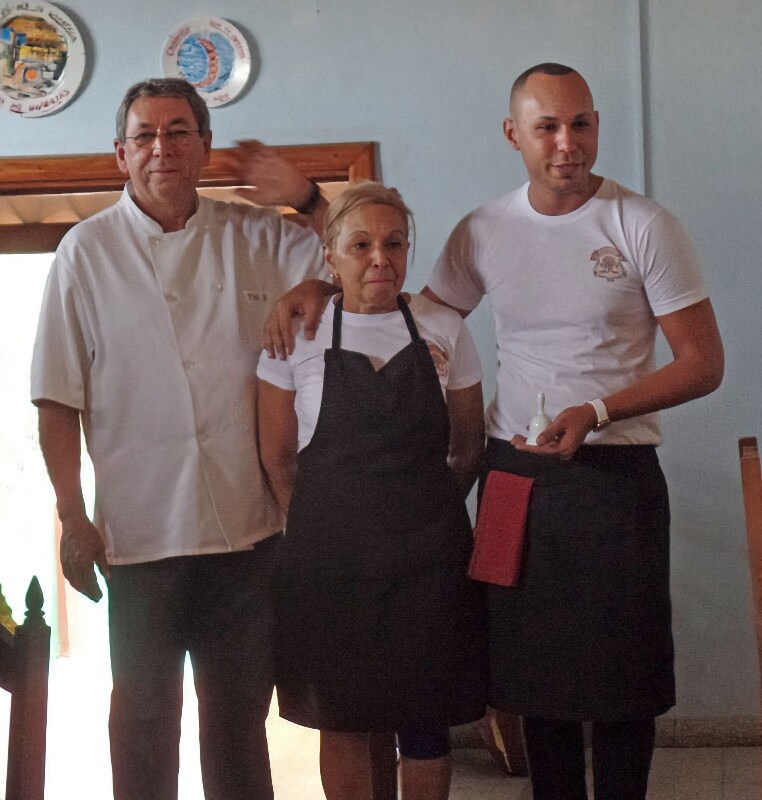
After lunch we walked around the area and were passed by another horse drawn vehicle. You can see the ribs standing out on this poor horse.
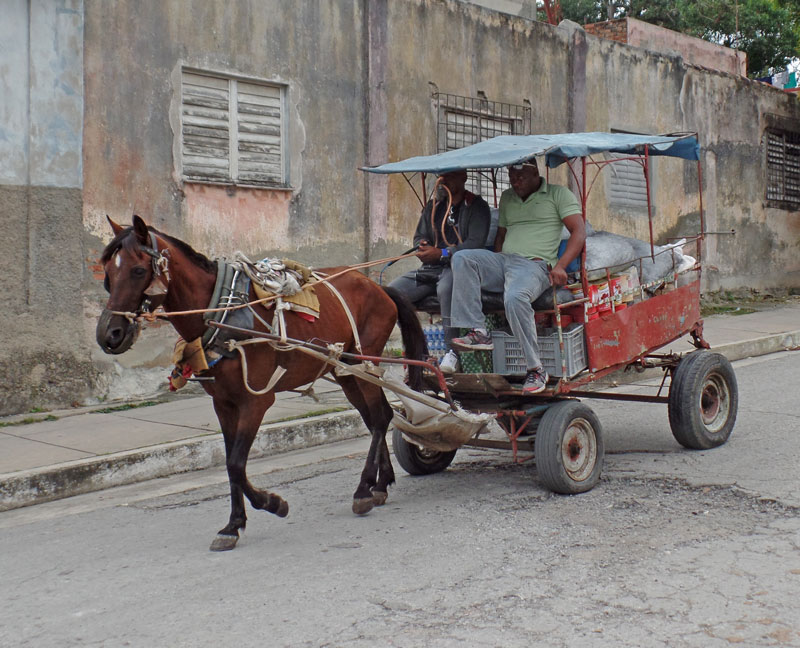
We then toured a botanical garden where we saw some of the most common trees and bushes of Cuba. We had a short rain shower while we were there. No pictures.
We returned to Cienfuegos where we were treated to a private concert given by an acapella choir. They perform in many cities and are coming to the US soon for a performance. They were outstanding.
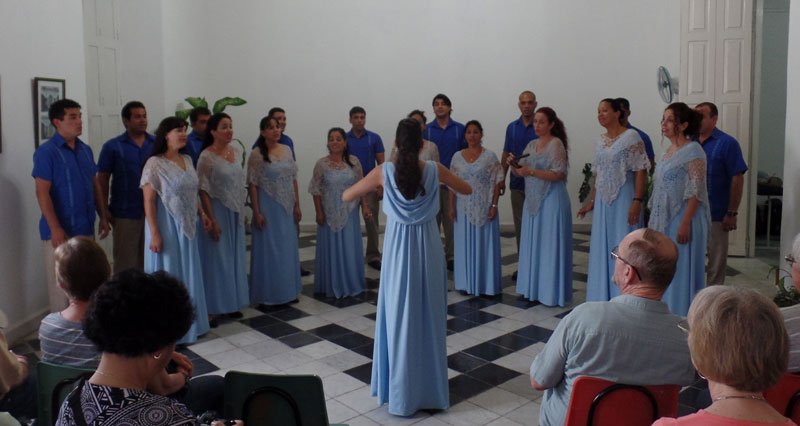
That evening we went to a privately owned restaurant, Villa Lagarto, that was near the hotel and was highly recommended by our guide. But the food was not quite as good as the food we had at lunch. Here's the group at dinner.
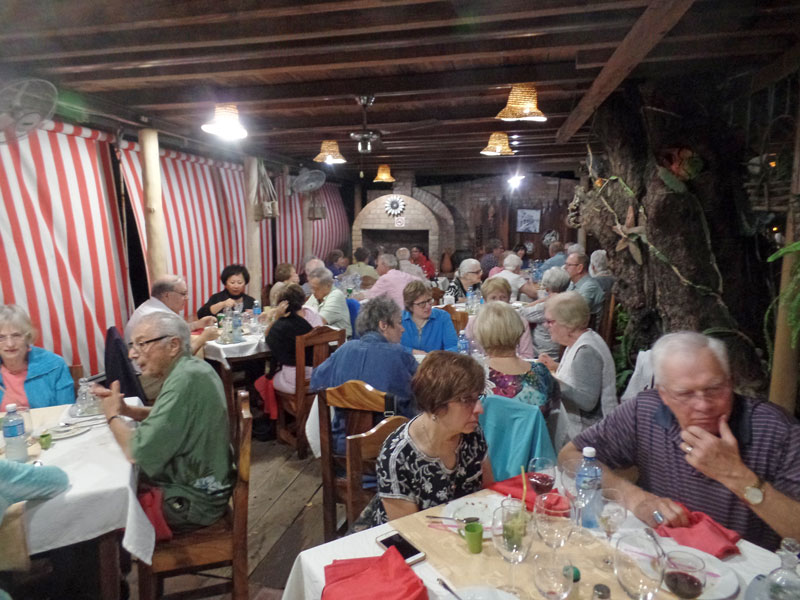
And the group leaders, Alex, Walkys, and Micaela.
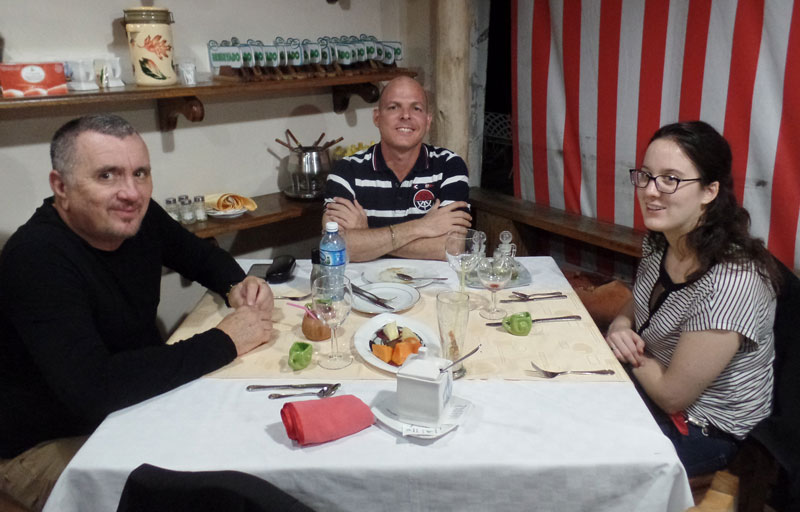
After this, it was back to the hotel to work on this blog and then to sleep.